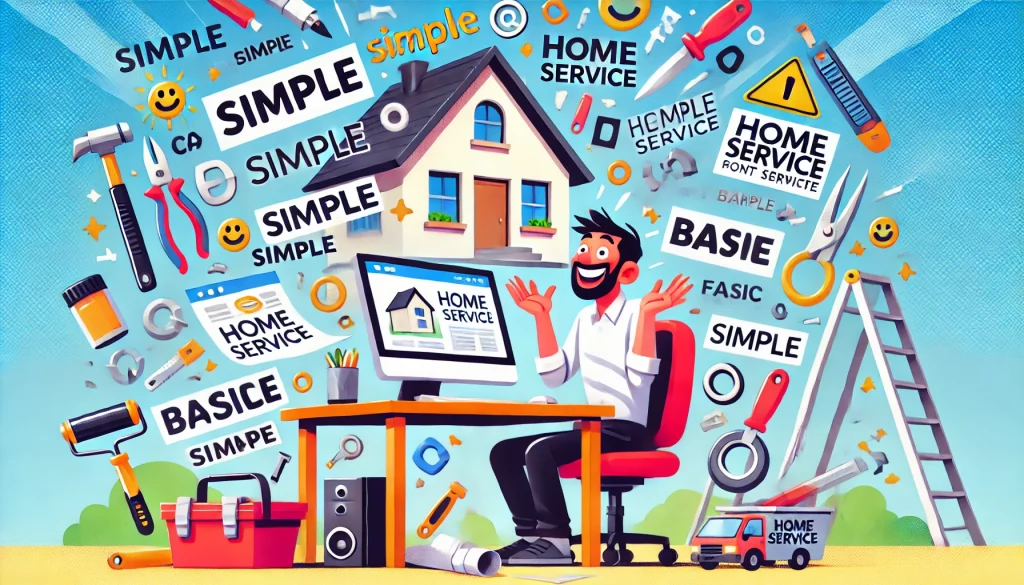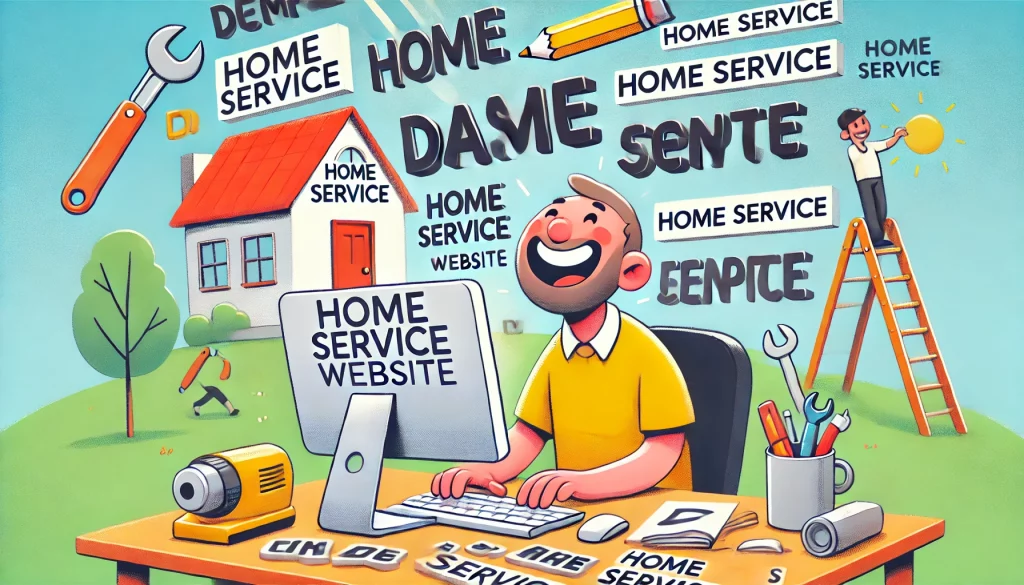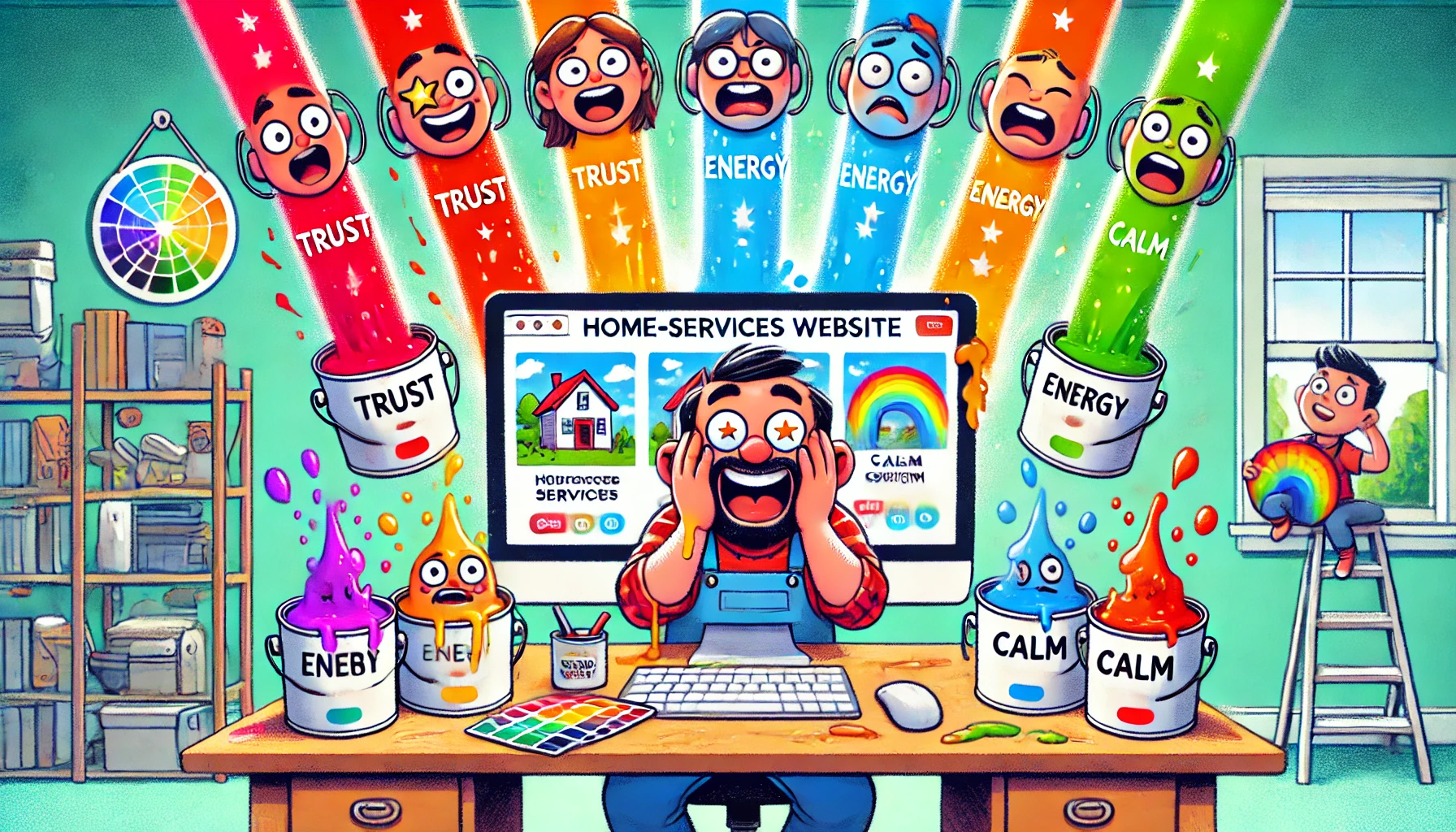Designing a home service website: Maximize user engagement with simple fonts

Your website font is essential in communicating with your customers. But how do you choose a font that will help you do this? It all starts with knowing your audience. And who better to know your audience than you?
In addition, your font choice must align with what your customers are searching for. For example, if you are a cleaning business and select a busy, grunge-style font, this may be detrimental to your customer who is seeking cleanliness and simplicity.
Little things to consider can make a big difference to your audience. Here’s how you can select a simple website font that works for your customers and your business.
Fonts basics
A font is a group of characters that come in a particular style and size, and their purpose is to display text. When searching for fonts, you may also see the word ‘typeface’ referenced.
What’s the difference? A typeface is a collective name for the font family (e.g., Helvetica® is a typeface). Fonts are the styles and the weight of the characters within the typeface (e.g., Helvetica® Light).
Sometimes they are used interchangeably. For the purpose of this article, we will refer to it as a font.
Branding and resources
Branding and fonts
If you’ve worked with a designer to help design your brand, use this as a foundation. Maybe you have some brand guidelines (if so, that’s fantastic!) or know which fonts your logo or marketing materials use.
It’s important that your font is consistent across different platforms. This enables your brand to stay consistent and helps your customers recognize your business.
According to a study by Lucidpress, consistent brand presentation across all platforms can increase revenue by up to 23%.
Font libraries and tools
The good news is there are various font libraries and tools out there for you to use. We’ll list a few below! Please make sure to check the font licensing for the font you choose and that you are allowed to use it for your website.
Often, fonts are a form of software that you must purchase a license for.
Helpful advice: Be careful if you are downloading a free font for your website. It may only be for personal use, not commercial — so always check the licensing!
Some online font libraries include:
Google Fonts
MyFonts
Adobe Fonts
Fontspring
Helpful advice: If you are using Google Fonts, use the ‘Type something’ bar at the top of the page. Here, you can type in your preferred text to see how it looks and if it is ideal for your customers.

Choosing and using fonts
You may find a common theme in this article — always keep your audience in mind. When searching for a font to use for your website, think about what would work best for your audience.
For example, if your customers are seniors, it’s important to look for a simple font that is legible and clear at larger sizes. In this circumstance, avoid using more decorative styles of fonts as they will be harder to read.
It is also important to consider the color of the font itself and how this will contrast with the background of your website. If you have a font color that blends into the background of your website, this can deter website visitors as it will make it harder to read.
The last thing you want is to turn away or deter website visitors because the readability of your website is poor. Even if something looks aesthetically pleasing, if it makes it hard for your customer to read, it’s not worth doing.
Remember to also consider which devices your audience will be using to view your website. Make sure that you’ve selected a simple font that works, no matter what the device. A study by Think with Google found that 61% of users are unlikely to return to a mobile site they had trouble accessing, and 40% visit a competitor’s site instead.
Helpful advice: When searching for fonts for your website, you’ll come across the terms Serif and Sans-Serif. What’s the difference? Serif fonts have a decorative line or ‘feet’ on their characters whereas Sans-Serif fonts do not.
Depending on your audience and your branding, it may be that you use one of the two for your website font, or you may use both if they make a good pair.

Number of fonts to use
I would not recommend selecting more than two fonts for your website. One to two simple fonts is enough to create a structure for your audience to follow (think of it as a newspaper!).
More than two fonts can start to get confusing and lead to your audience not knowing where to look on the page.
If you’ve got a font in mind but are not sure it works well for your headings or paragraph text, there are a variety of font pairing tools that you can use as a font matchmaker. One of these matchmaking tools is FontPair.
Helpful advice: There’s nothing wrong with sticking to one font (some fonts are happy to be single pringles!). They can work great for headings and paragraph text all on their own.
Font sizes and styles
You’ve selected your fonts. Now, you just need to determine which font sizes and styles you will use across your website.
This lets you set defined, consistent styles, giving your website visitors a clear structure they can follow. It will also save you lots of time in the long run as you’ll have a guide to use in the future!
There are three things to think about here: font size, font style, and line-height. The font size is how large the characters will be when displayed on your website.
It is often measured in points (pt) or in pixels (px) on computers. Line-height or line spacing is the vertical spacing between lines of text.
This is important because it has a large impact on the overall readability of the text. Have you ever noticed that sometimes spacing between paragraphs seems a little too close together?
This can be amended by line-height. With line-height, it’s important to make it bigger than the font size itself.
For readability, try to aim for around 140% – 180% larger than your font size. So for example, if your font size is 32px, let’s try multiplying this by 1.5 to get your line-height (and of course, you can adjust it accordingly!).
Below is an example of a group of font sizes and styles for the desktop version of your website:
Main headings (for your main titles)
Font size: 32px. Line-height: 48px.
Font style: Extra bold. This will give your headings a very clear distinction as they are heavier in weight and larger. But they are still notably larger than your main paragraph text.
Subheadings (for your service titles)
Font size: 26px. Line-height: 39px.
Font style: Medium. This will give your subheadings a clear distinction as they are not as heavy in weight and are smaller. But they are still notably larger than your main paragraph text.
Paragraph text (your main body text)
Font size: 18px. Line-height: 27px.
Font style: Normal. This will give your paragraph text a clean and clear reading style that will allow your customers to read larger chunks of text with ease.
Link text (for hyperlinks in your paragraph text – this will likely be a different color too)
Font size: 18px. Line-height: 27px.
Font style: Medium. If text links are in the main body of your text, having a medium font-weight will emphasize the links amongst the rest of the paragraph (so your audience knows it is clickable).
Example for mobile devices
Main headings (for your main titles)
Font size: 28px. Line-height: 42px.
Font style: Bold. Because your users will be viewing your website on a smaller device, bold is just enough for your headings to not display too harshly on a smaller screen but still stand out amongst your other font styles.
Subheadings (for service titles)
Font size: 24px. Line-height: 36px.
Font style: Medium.
Paragraph text (your main body text)
Font size: 16px. Line-height: 24px.
Font style: Light. A similar idea to having bold headings on mobile, light will just ensure that the paragraph text is still easy and clear to read and not too harsh on the eye.
Link text (for hyperlinks in your paragraph text – this will likely be a different color too)
Font size: 16px. Line-height: 24px.
Font style: Normal. It will contrast nicely to the light body text so that it is still emphasized but not so much so that it looks out of place.
Helpful advice: For longer lines of text, try to limit the number of characters to 40 – 60 characters. This makes it easier to read and digest. According to the Nielsen Norman Group, shorter line lengths are generally easier to read and more user-friendly.
Common mistakes to avoid
Using too many fonts: Stick to one or two fonts to maintain consistency and readability.
Choosing overly decorative fonts: Avoid fonts that are hard to read or too stylized for your audience.
Ignoring readability: Ensure your font is easy to read on all devices and screen sizes. A study by Adobe found that 68% of consumers believe that a business with a legible font is more professional.
Poor contrast: Choose font colors that stand out against your background for better visibility.
Inconsistent branding: Make sure your fonts align with your brand guidelines across all platforms.
Not checking font licensing: Verify that the font license allows for commercial use on your website.
Improper font sizes and line-height: Use appropriate font sizes and line-height to enhance readability.
Neglecting accessibility: Select fonts that are accessible to people with visual impairments. The Web Content Accessibility Guidelines (WCAG) recommend a contrast ratio of at least 4.5:1 for normal text.
Not testing on different devices: Always test how your font looks on mobile, tablet, and desktop. Research by Statista shows that mobile devices account for approximately 54.8% of global website traffic.
Skipping updates: Regularly update your fonts to keep up with design trends while maintaining brand consistency.

Expert opinions on choosing the right font
Jane Mitchell, UI/UX Designer: “Choosing the right font for a home service website is like laying the foundation of a house. A simple, clean font ensures the user interface is approachable and easy to navigate. Clients who switched to simple sans-serif fonts like Arial or Helvetica reported a 15% drop in bounce rates and increased user retention. It’s a small change with a huge impact on user experience.”
Michael Carter, Branding Specialist: “Fonts are a subtle yet powerful branding tool. For home service websites, a simple font can communicate reliability and professionalism. A complex or overly decorative font might look fancy but can confuse potential customers. Standardizing font choices boosted brand recognition by over 20% for some companies.”
Laura Thompson, Digital Accessibility Consultant: “Accessibility should be a priority for any website. Simple fonts play a crucial role in making content accessible, including for users with visual impairments. Fonts like Verdana and Tahoma enhance legibility and inclusivity. Websites prioritizing accessibility not only comply with legal standards but also experience increased user satisfaction and broader audience reach by up to 30%.”

 10 min
10 min 







